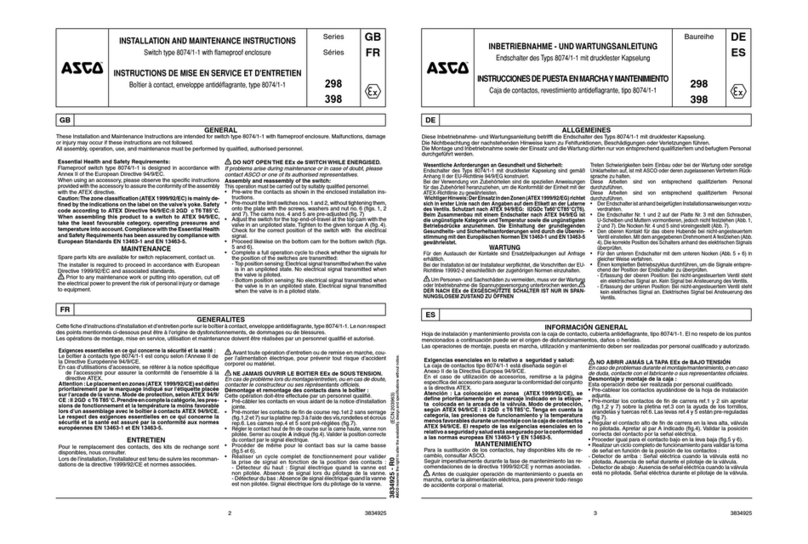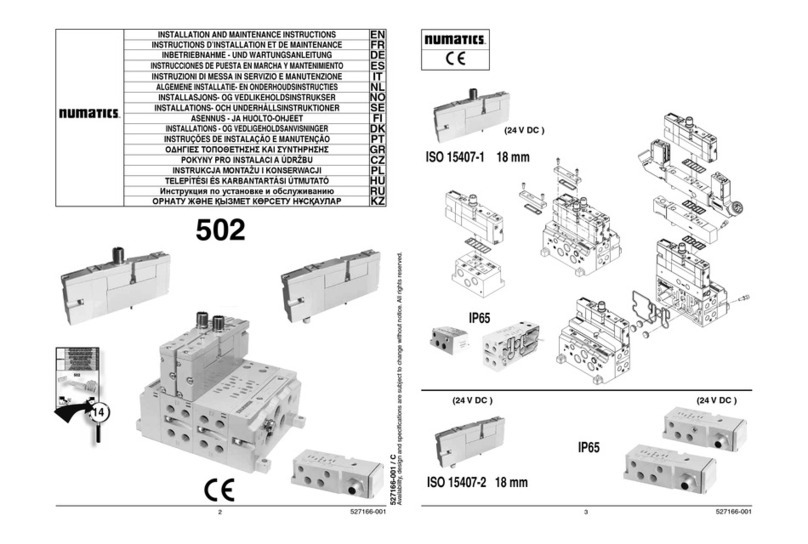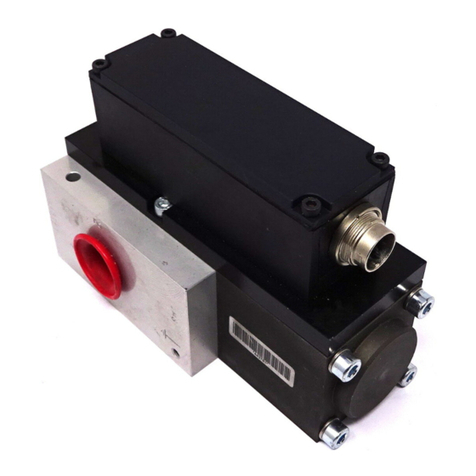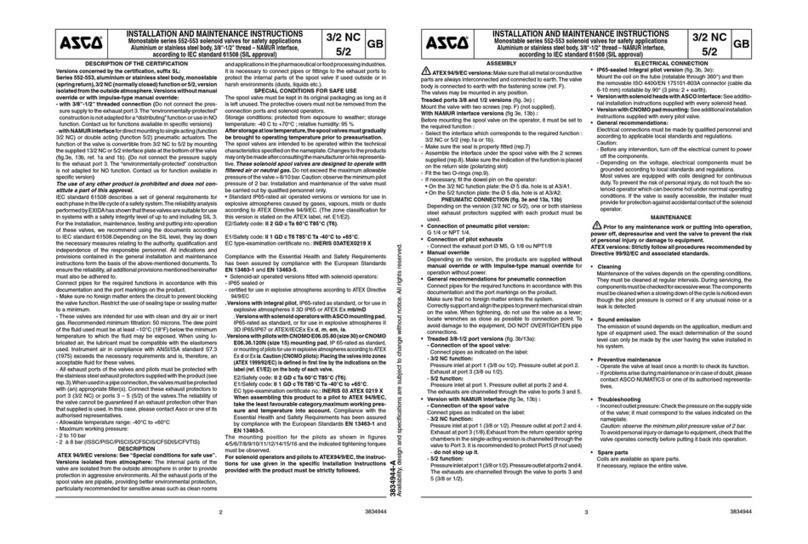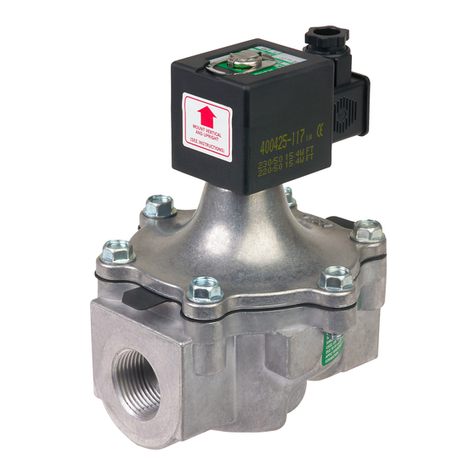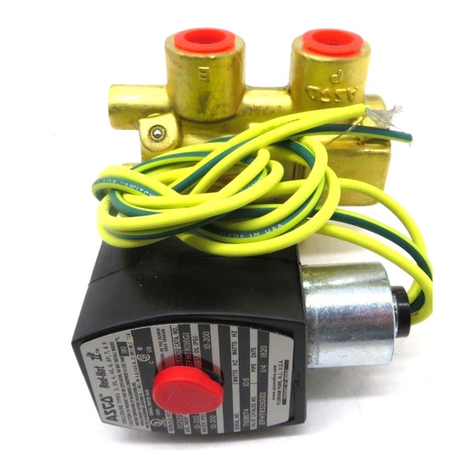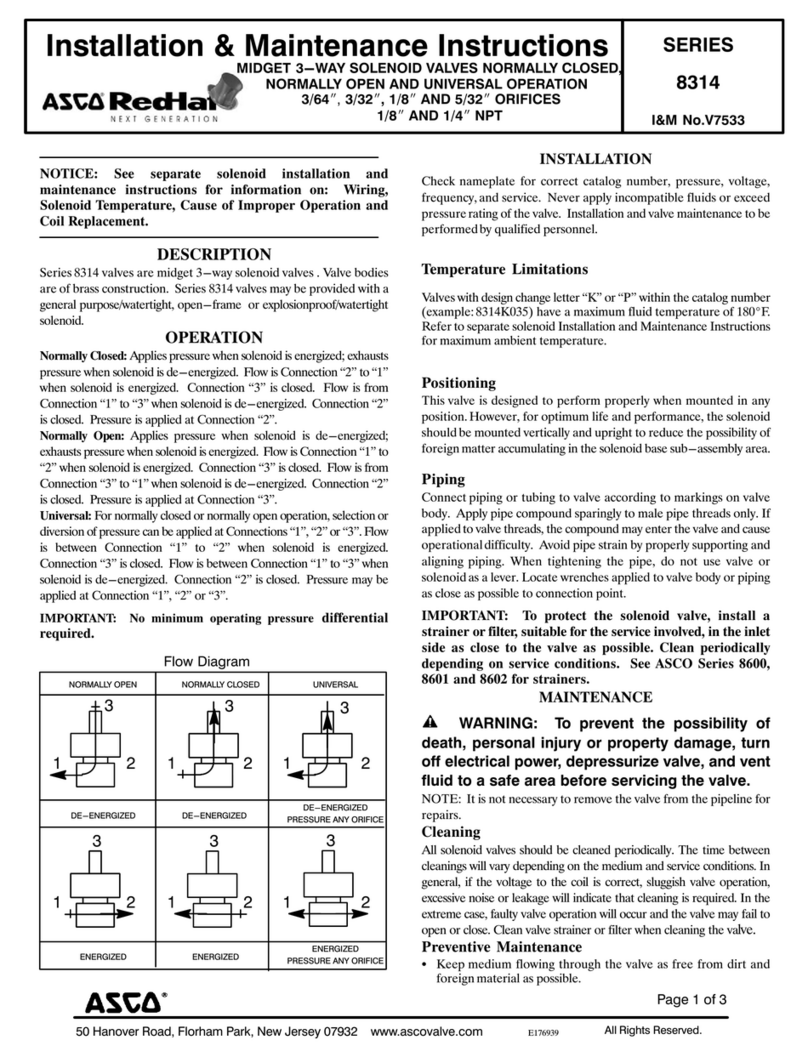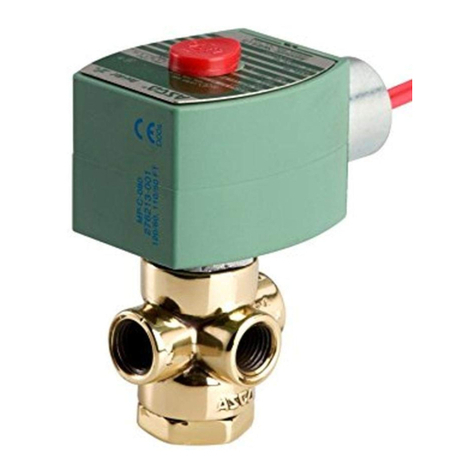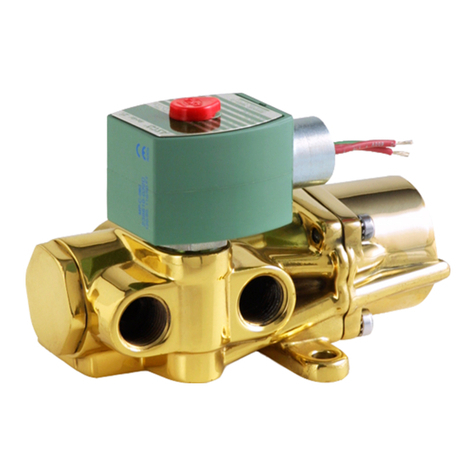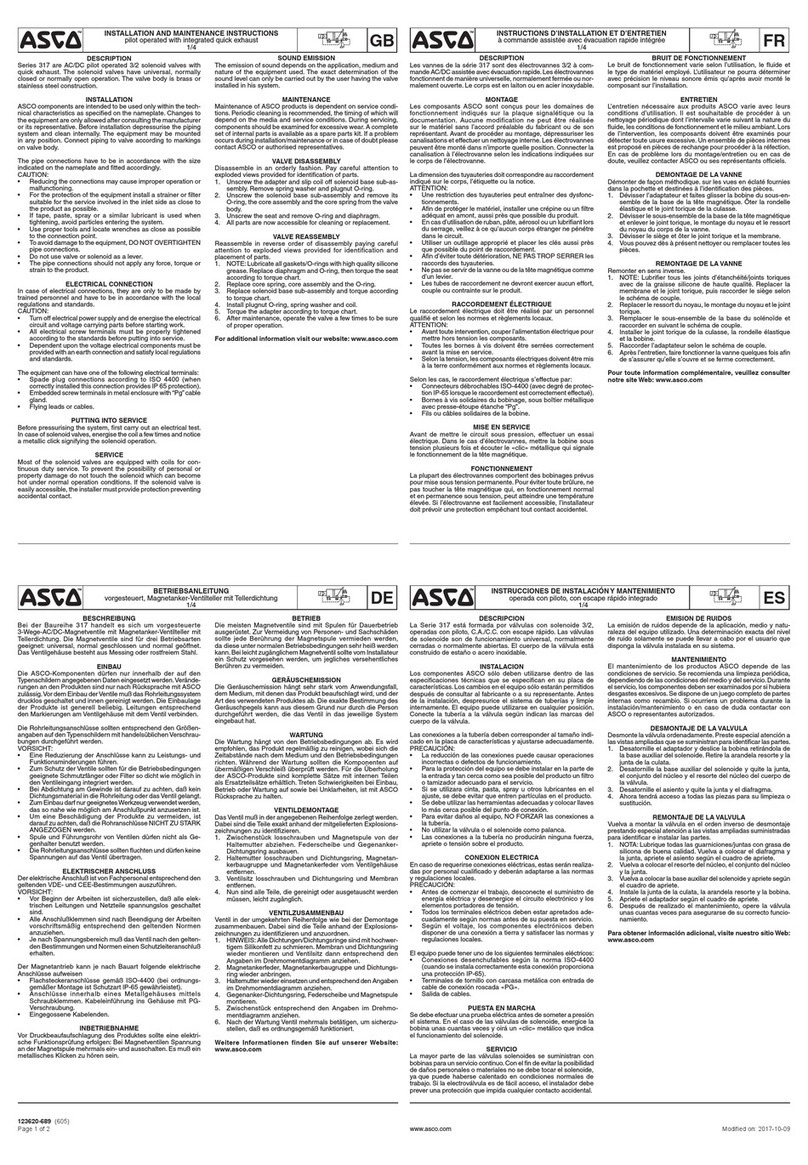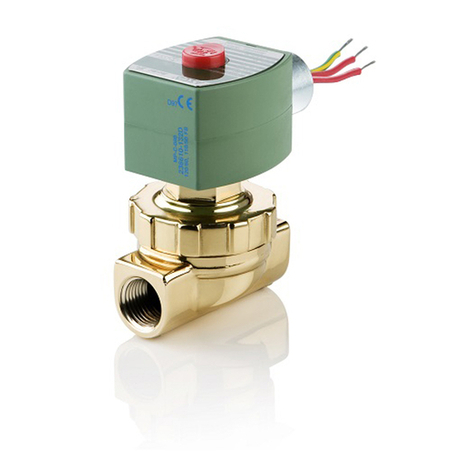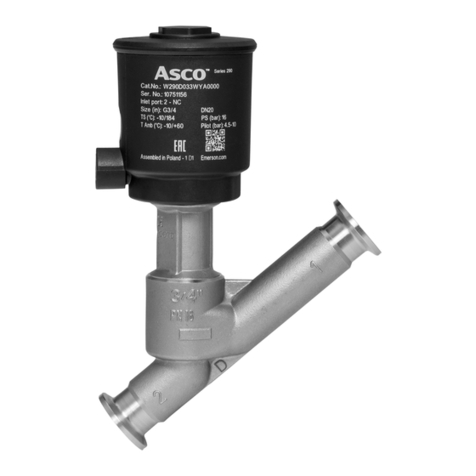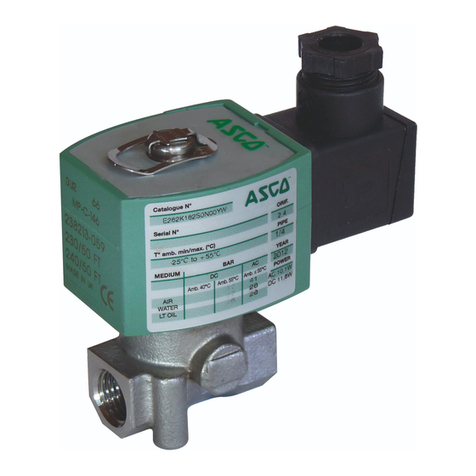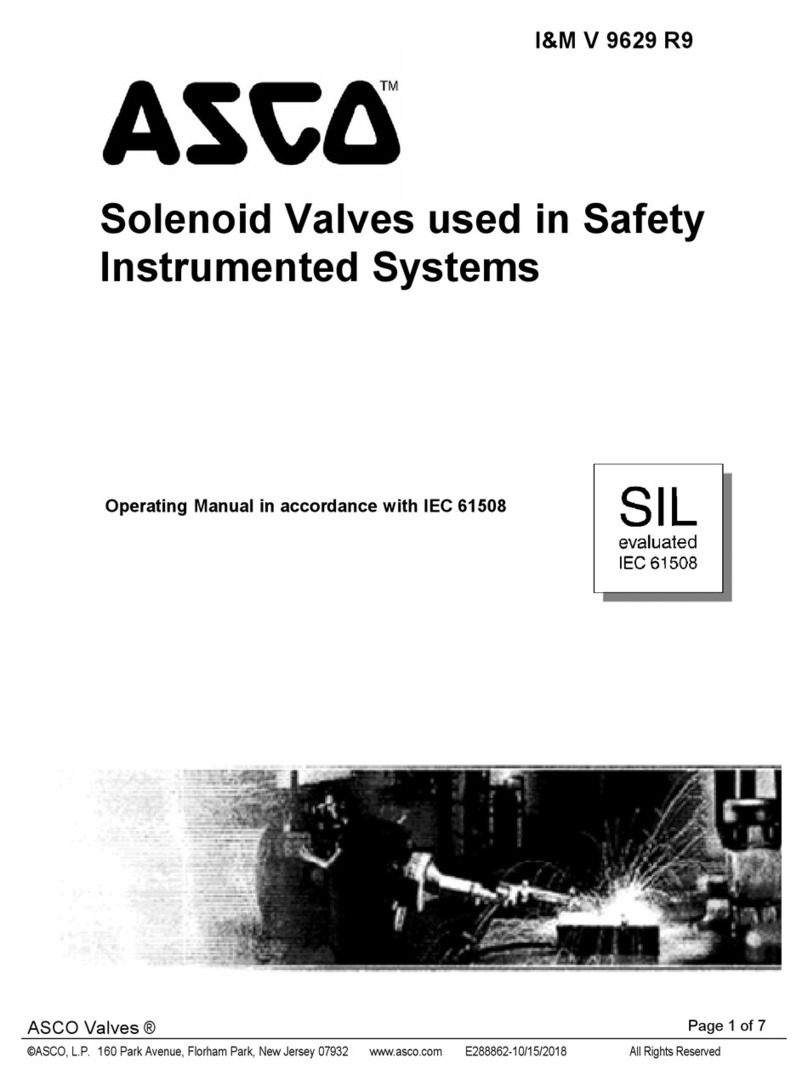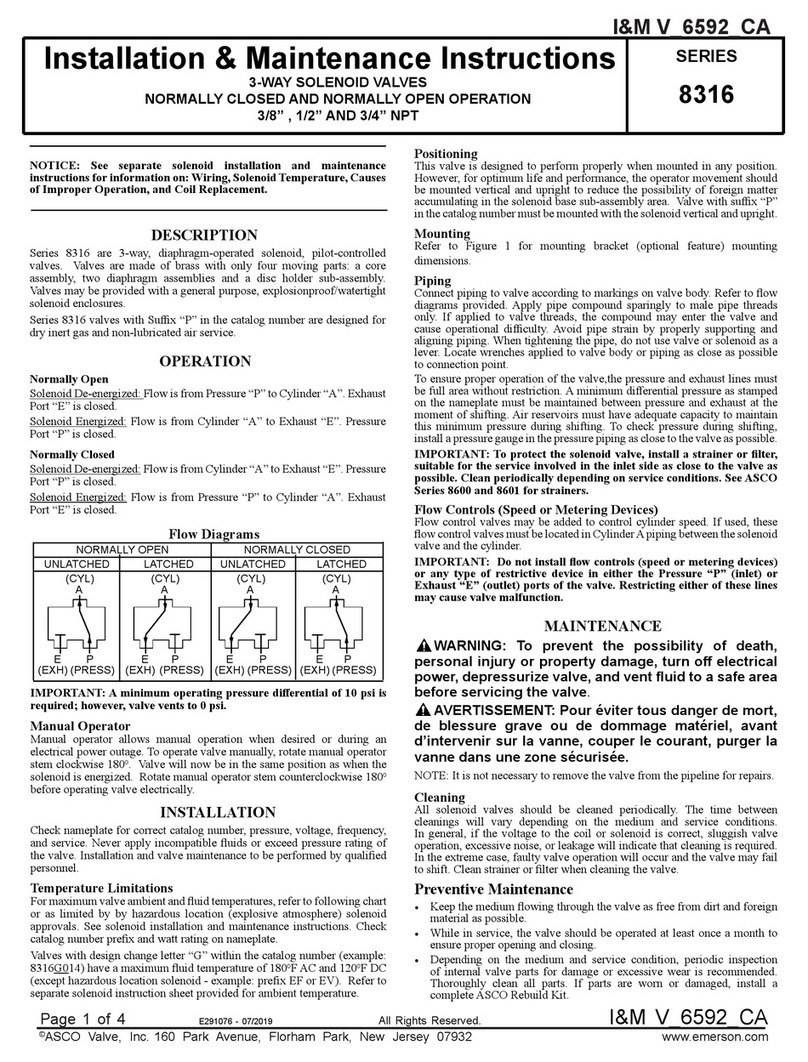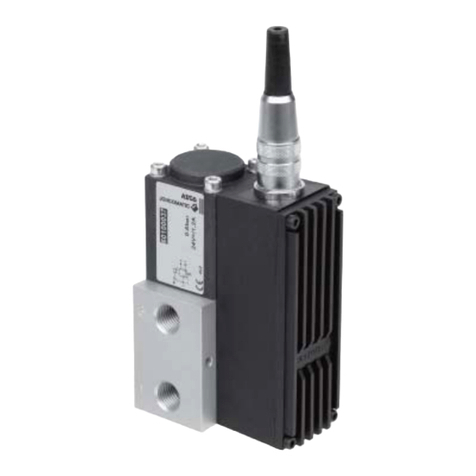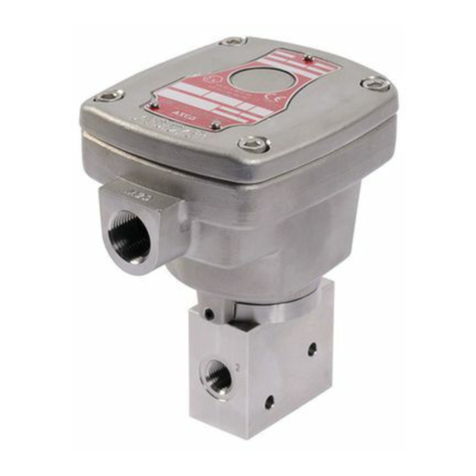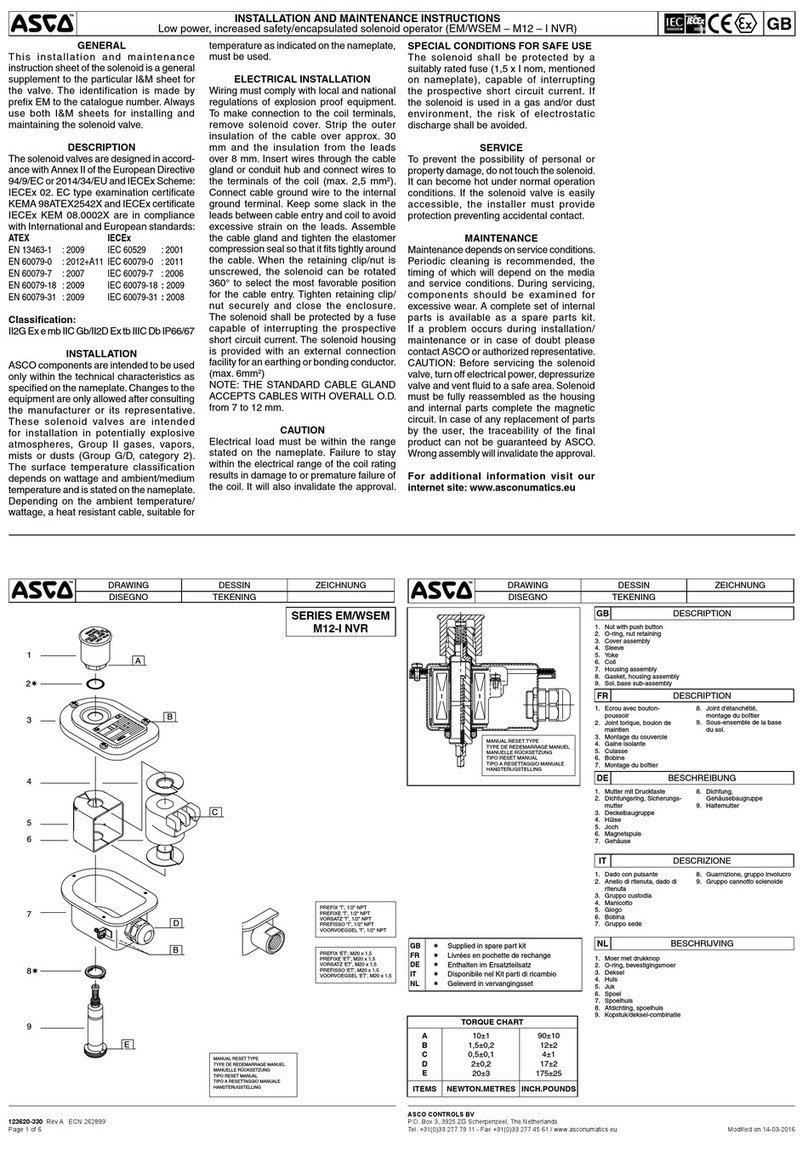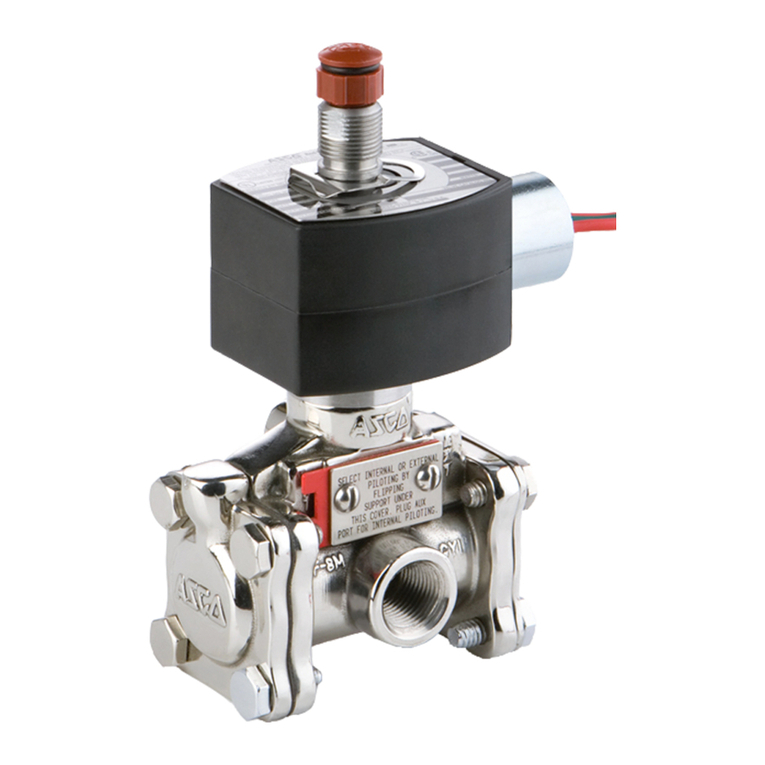
50-60 Hanover Road, Florham Park, New Jersey 07 32
ASCO Valves
Page 2 of 4 Form No.V5452R3
Piping
Connect piping or tubing to valve according to markings on
valve body.
CAUTION: This valve is equipped with ethylene
propylene elastomers which can be attacked by oils
and greases. Wipe the pipe threads clean of cutting
oils.
Apply pipe compound sparingly to male pipe threads only.
If applied to valve threads, the compound may enter the
valve and cause operational difficulty. Avoid pipe strain by
properly supporting and aligning piping. When tightening
the pipe, do not use valve or solenoid as a lever. Locate
wrenches applied to valve body or piping as close as possible
to connection point.
CAUTION: To protect the solenoid valve, install a
strainer or filter, suitable for the service involved, in the
inlet side as close to the valve as possible. Clean
periodically depending on service conditions. See
ASCO Series 8600, 8601 and 8602 for strainers.
M INTEN NCE
WARNING: To prevent the possibility of
personal injury or property damage, turn off
electrical power, depressurize valve, and
vent fluid to a safe area before servicing the
valve.
NOTE: It is not necessary to remove the valve from the
pipeline for repairs.
Cleaning
All solenoid valves should be cleaned periodically. The time
between cleanings will vary depending on the medium and
service conditions. In general, if the voltage to the coil is
correct, sluggish valve operation, excessive noise or leakage
will indicate that cleaning is required. In the extreme case,
faulty valve operation will occur and the valve may fail to
open or close. Clean valve strainer or filter when cleaning
the valve.
Preventive Maintenance
Keep the medium flowing through the valve as free from
dirt and foreign material as possible.
While in service, the valve should be operated at least
once a month to insure proper opening and closing.
Depending on the medium and service conditions,
periodic inspection of internal valve parts for damage or
excessive wear is recommended. Thoroughly clean all
parts. If parts are worn or damaged, install a complete
ASCO Rebuild Kit.
Causes Of Improper Operation
Incorrect Pressure: Check valve pressure. Pressure to
valve must be within range specified on nameplate.
Excessive Leakage: Disassemble valve and clean all parts.
If parts are worn or damaged, install a complete ASCO
Rebuild Kit.
Valve Disassembly
1. Disassemble valve in an orderly fashion. Use exploded
views for identification and placement of parts.
2. Remove solenoid, see separate instructions.
3. Unscrew solenoid base sub-assembly and remove core
spring from top of core assembly.
4. For valves made of stainless steel (Figure 2) with a
manual operator, unscrew manual operator body. Then
remove bonnet gasket, stem retainer, stem assembly
and stem gasket.
5. For valves made of brass (Figure 3) with a manual
operator, it is not necessary to disassemble manual
operator for normal maintenance (cleaning). However,
if a rebuild kit is being installed, remove stem pin,
manual operator stem, stem spring, and stem gaskets.
6. Remove bonnet screws, valve bonnet, core/diaphragm
sub-assembly and body gasket.
7. All parts are now accessible for cleaning or
replacement. If parts are worn or damaged, install a
complete ASCO Rebuild Kit.
Valve Reassembly
1. Reassemble valve using exploded views for
identification and placement of parts.
2. Lubricate all gaskets with DOW CORNINGĂ 111
Compound lubricant or an equivalent high-grade
silicone grease.
3. Position body gasket and core/diaphragm
sub-assembly in valve body. Locate bleed hole in
core/diaphragm sub-assembly approximately 45 from
valve outlet.
4. Install core spring in top of core assembly. Wide end of
core spring in core first closed end protrudes from top
of core.
5. Replace valve bonnet and bonnet screws on valve body.
Torque bonnet screws in a crisscross manner to 50 ± 5
in-lbs [5,7 ± 0,6 Nm].
6. For valves of stainless steel construction (Figure 2) with
a manual operator proceed as follows:
A. Install stem gasket on stem assembly and into
manual operator body.
B. Position stem retainer on manual operator body. Be
sure captive spacer on stem assembly is on the
Outside of the stem retainer.
C. Install bonnet gasket and manual operator body.
Then torque manual operator body to 175 ± 25
in-lbs [19,8 ± 2,8 Nm].
D. After assembly, operate manual operator to be sure
there is no misalignment or binding. If binding
occurs, loosen manual operator body and move stem
retainer slightly clockwise. Re-torque and check for
proper operation. Then rotate manual operator
stem counterclockwise as far as possible.
7. For valves of brass construction (Figure 3) with a
manual operator, proceed as follows:
A. Install outer stem gasket and inner stem gasket on
manual operator stem as shown.
